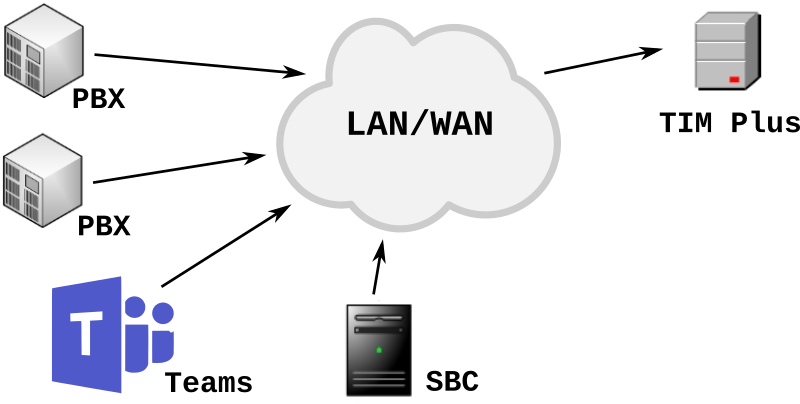Wherever in the world your phone systems are located, or whichever online collaboration platform you connect to, your valuable call data is captured using an array of advanced technologies.

Whether it's a serial cable, a network connection, a vendor-specific API, or a cloud-hosted collaboration service, TIM Plus captures your call data, safely stores it and accurately processes it to provide you with perfect telephone statistics for your business.
No two vendors' call data share the same format so, while this might make for a challenging environment for other call logging systems, TIM Plus's advanced, rapid call processing engine is built to deal with anything you can throw at it.
With 20 years' telecom data processing experience, TIM Plus easily copes with some of the most complicated live event stream formats, down to good old-fashioned CDRs.
At the heart of its call processor lies a unique call matching module which can be customised from the outside, should there be customer-specific requirements like wanting to log the final recipient of a call in a multi-leg chain, or the first person who answered it.
Add to the engine an open Javascript processor and you have the ability to fully log all call types: internal, external, private wire, ACD and group calls, PBX features, and tandems.
In short, you’ll never miss a single call!
TIM Plus is designed to collect data from literally hundreds of different types of on-premise and cloud-connected PBX or online collaboration platforms across any number of physical locations.
In short, if TIM Plus can get the data, it can process it!
TIM Plus can make use of any of the methods listed below to source its data:

Using a range of cloud connectors, TIM Plus can capture data from online collaboration platforms, such as Microsoft Teams, Zoom, etc.

Both inbound (listener) and outbound (client) socket connection methods are supported.

TIM Plus can collect batch transfers from billing providers or large phone systems that support this method.

Any ODBC database can be polled at regular intervals to collect call records directly from its table(s).

For collection of call data through non-standard methods, an open scripting facility exists which can instantiate third-party objects in a fully customisable way.